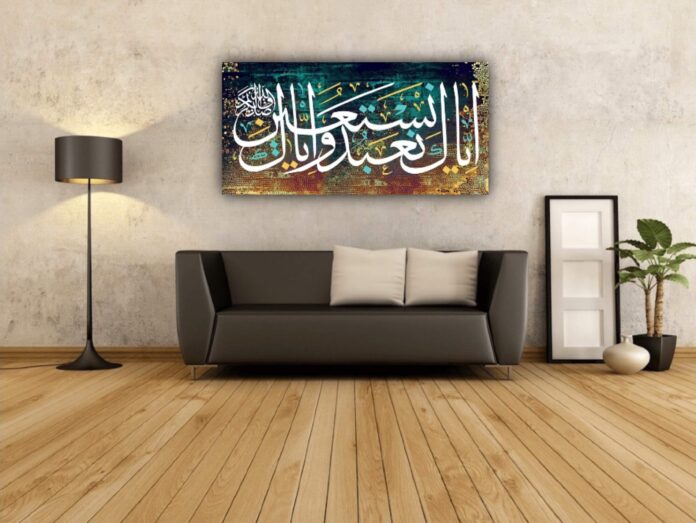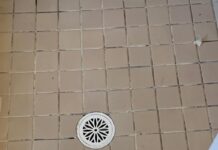No house is complete without some good decor. The purpose of adding home decoration to the home is for reflection. Your home decoration should act as a mirror of your beliefs, personality and your aesthetics.
If you want to showcase your Islamic and Muslim identity by using Islamic calligraphy wall art which is availabe at hutch.pk, you have arrived at the right place. This article will show all Muslims great tips for decorating your home.
1. Have a Specific Prayer Space
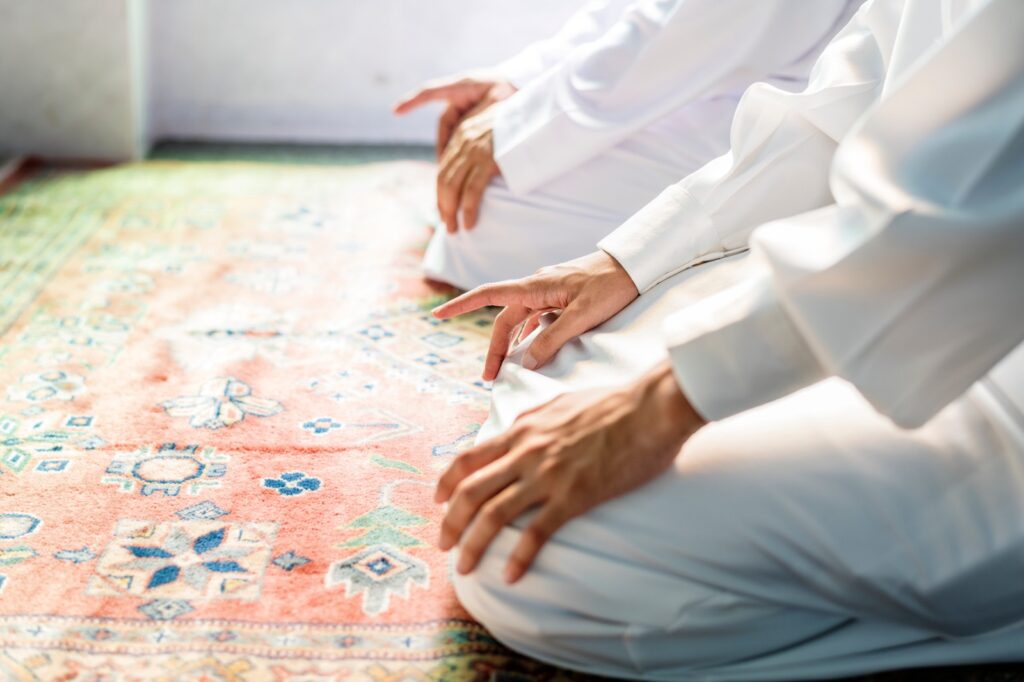
The five compulsory daily prayers are a crucial component of Islam and a Muslim lifestyle. Dedicating an entire space for praying in a peaceful and quiet environment is a must to have in each Muslim home.
While making or decorating the Muslim prayer space, remember that it should be a quiet escape free of any noise and distractions. Moreover, the prayer space should be facing towards the qibla in such a way that if any person is passing, they can easily go behind the praying person.
In order to organize the prayer space, you can add a basket for storing a few prayer rugs, prayer clothes and scarves. To have easy access, place dècor shelves on the wall for placing the Quran and some Islamic books.
If you want to style your prayer space, you can hang Islamic art on the wall. Islamic decoration is not dull just because we are not allowed to hang pictures of living things. There are numerous choices for decorating the walls in the living room, bedroom and everywhere else. Arabic calligraphy and Islamic abstract art are some options.
2. Surround the Home with Islamic Reminders
Reminders guide Muslims and believers which is why it is important to add such decorative pieces that continuously remind you of Allah, His blessings, and His greatness. For instance, you can stack a pile of Dua cards on the bedside table.
You can buy Islamic accessories having Dhikr phrases such as Alhamdulillah, SubhanAllah and Allahu Akbar. Every time you pass by such Dhikr, you will automatically repeat the words which will increase your belief. Islamic geometric shapes are another great option which boost your Tawheed.
3. Add a Shoe Rack
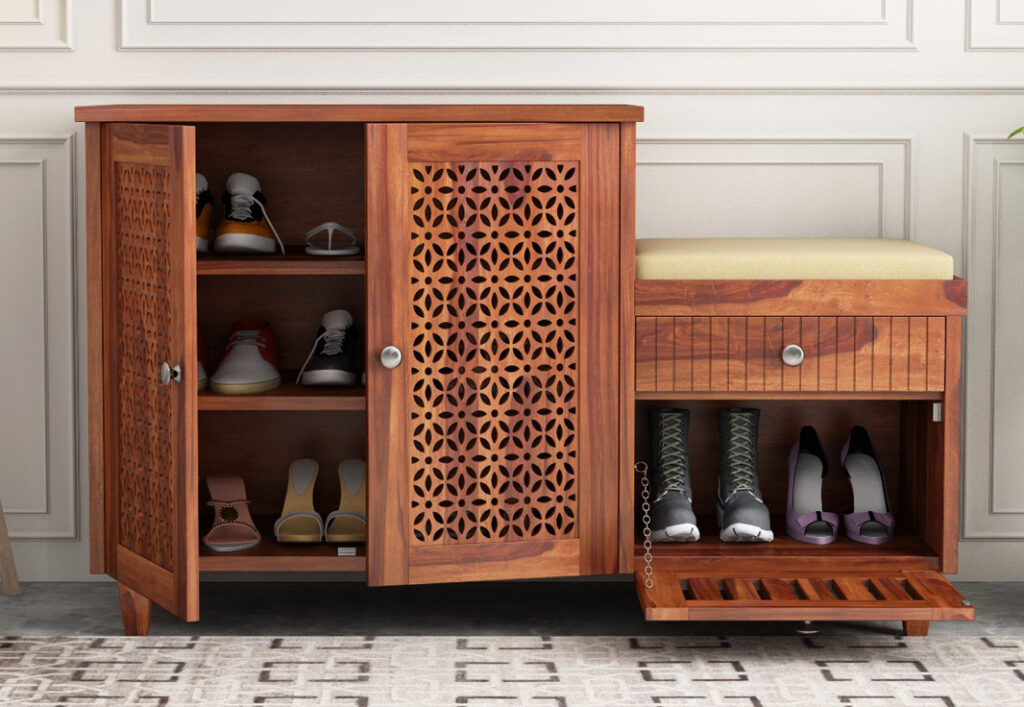
Shoes are associated with impurities and debris. Typically, Muslims do not wear their shoes at home. They usually have separate shoes to wear at home. So, during the process of decorating your home, add a shoe rack in order to prevent their buildup in front of the entry door.
4. Place Soft Area Rugs
Placing soft area rugs in the bedroom, living room or the dining room is a superb decorating preference. Whenever your feet are naked, they can feel comfort on the plush rug. Try to place the soft rugs in the prayer space so that whenever someone prays, they can feel at peace. Persian rugs and rugs having geometric Islamic designs are a great option.
5. Feature Your Heritage
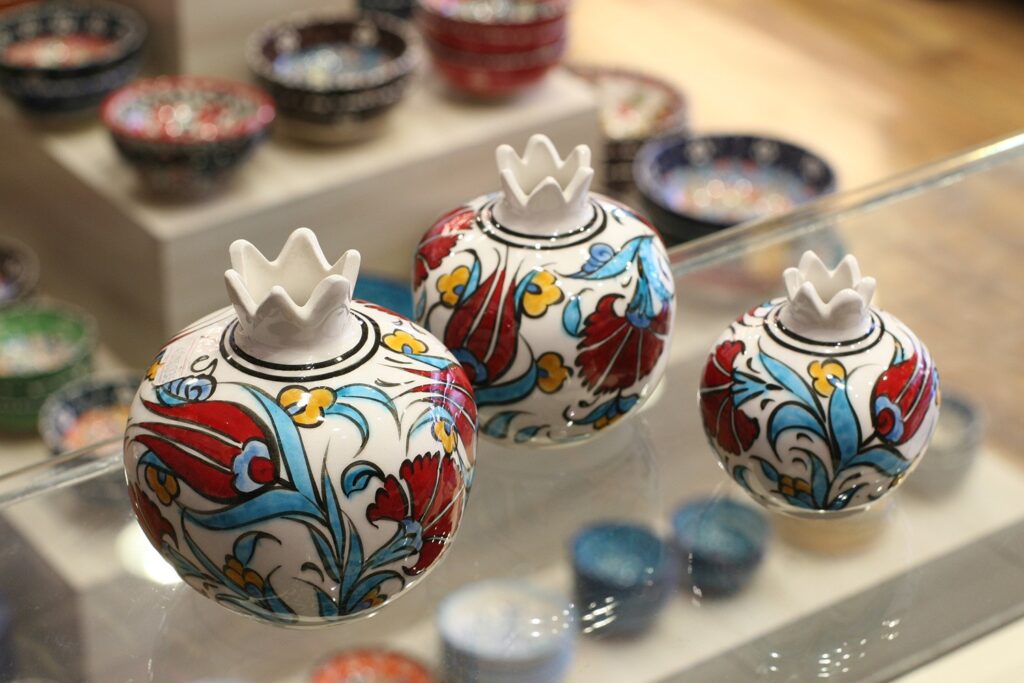
Muslims live everywhere in the world. However, the cultural heritage significantly varies between the African, Asian, European, Middle Eastern and American Muslims. Muslims belonging to each heritage come with their own traditions, culture and customs.
Start decorating your Islamic home by adding your own cultural items which can reflect your heritage. For instance, Turkish pottery, Moroccan pouf, istikan, legendary Arabic cutlery, lanterns, and tatreez are excellent products to place in your home.
If your culture is different from these, then add something according to your culture. However, remember not to compromise Islamic values and choose neutral but beautiful cultural handicrafts.
Themes of Islamic Art
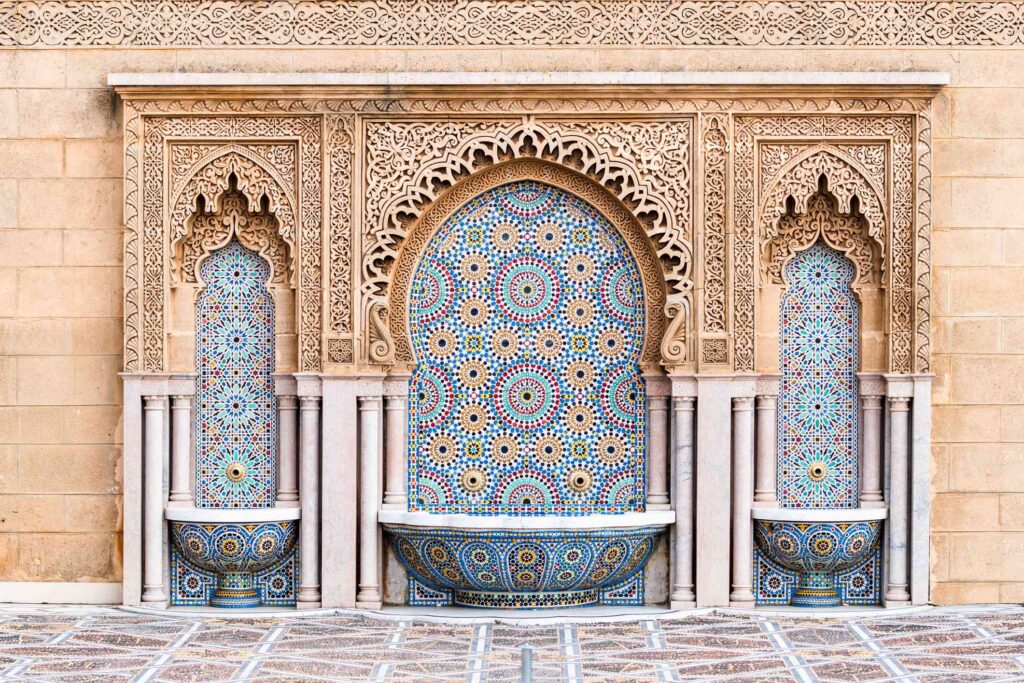
There are themes and categories of items which associate the art of the Islamic world. For instance, calligraphy is a very crucial art originating from the Islamic world. The Holy Book of Islam known as Quran is itself written in sophisticated scripts. The Islamic calligraphy reflects the Holy words from Allah which were given to Prophet Muhammad (SAW) during his visions.
It represents the divine authority of Allah. The Quran verses are written in calligraphy. You can see Islamic calligraphy in the Muslim architecture and various types of Muslim art. Similarly, Islamic art showcases poetry, especially on the walls of homes and ceramic bowls. The omnipotent nature of calligraphy undermines the value which is given to language, particularly that of Arabic.
The geometric and floral motifs are extremely famous all over the world where Islam presided or is to this day a major religion and cultural authority. It can be seen in the private palaces of Spain, Alhambra, and the detail oriented metal work by Safavid Iran. Similarly, specific building categories are standing all over the Islamic world. For instance, religious schools, mosques and their minarets, gardens, mausolea and madrasas. But their type can differ.
One of the biggest misconceptions people hold regarding the art of the Islamic world is that it is aniconic. This means that the art does not include representation of animals or people. The earliest examples of architecture and religious art, for instance the Al Aqsa mosque and the Dome of the Rock (both built in), and the Great Mosque of Damascus constructed with the Umayyad rulers did not add human animals and people.
However, the private homes of rulers such as Khirbat Mafjar and Qasr Amra were packed with majestic mosaics, figurative paintings and sculpture. The research of arts in the Islamic world was not blessed with much attention or care when we compare it to other branches of art history. This is due to various reasons.
First of all, many scholars are not aware of Farsi or Arabic, which is the most abundant language in Iran. Without knowing the language, they can’t read Islamic calligraphy. Secondly, the objects and art pieces of Islsmic world has been given less value by the Western scholars.
The Islamic decorative art consists of metal work, carpets, books and ceramic sculpture. However, the past 50 years has observed a great boost of research on the art pieces of the Islamic world.
Taj Mahal, Mina’i ware bowl, and silk carpet are examples of Islamic art. Islamic art is a contemporary concept made by art historians in the 19th century. Today, Islamic art refers to all types of arts that were made in the countries where Islam was a dominant religion. Islamic art takes into account all art categories made in the Islamic world.

